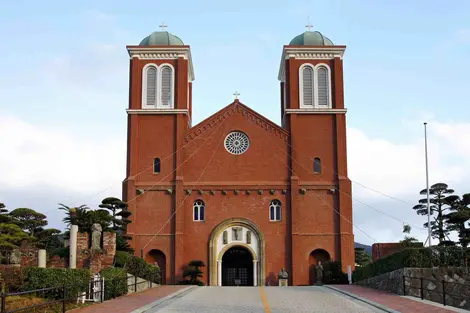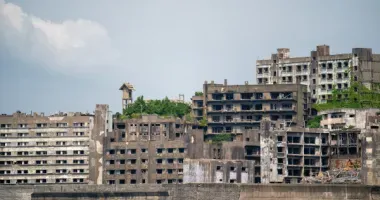Urakami Cathedral 浦上天主堂
Symbol of the Nagasaki Atomic Bomb
Hiroshima has its dome, survivor of the atomic bomb. Nagasaki has Urakami Cathedral, tragic testimony of an entire segment of the history of this multicultural city.
On August 9, 1945 at 10:58, Urakami Cathedral was occupied by local faithful gathered for Mass, when 500 meters above the atomic plutonium bomb Fat Man exploded. Located at the epicenter of the explosion, the vast edifice of stone and brick collapsed. There remained only a few pillars and statues still standing, including the famous St. Agnes Nagasaki, now on display at UN headquarters in New York.
Hidden Christians of Nagasaki
Urakami had an ancient community of hidden Christians, kakure kirishitan, who survived religious persecution. They came out of hiding in the Meiji period, to the amazement of French missionaries who built the cathedral of the diocese of Nagasaki, the largest in Asia in its time. The red brick building and Romanesque Revival style welcomed the few 9000 members of the community. She disappeared entirely in the bombing.
An Unknown Heritage
Unlike Hiroshima, where the Dome was left as is, Urakami Cathedral was rebuilt in 1959 by the municipal authorities. This explains why the place is less visited and has not been listed as a UNESCO heritage. The current building is identical to the original church and exposes statues, like the Virgin of Nagasaki, whose tragic face, blackened by the bomb, is impressive.
The remains of the first cathedral were moved not far away and are still visible. You can thus see the towers of parts moved several hundred meters away. The bomb museum also exhibits several objects taken from the ruins, such as the cathedral bell. The place is quiet, in a serene neighborhood that seems to forget the past.
Recently, the building next to the cathedral of a museum dedicated to the hidden Christians of Nagasaki and the rest of Japan was announced and scheduled for completion in 2018.






















